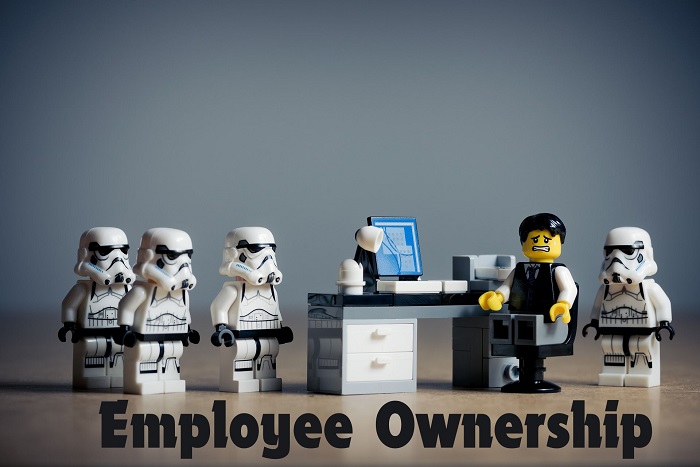Employee ownership is becoming a popular strategy for companies seeking sustainable growth, higher employee engagement, and improved overall performance. By transitioning to an employee ownership structure, businesses can empower their teams, ensuring that staff members feel a personal stake in the company’s success. The shift to employee ownership is not merely about legal structures; it’s about changing the dynamics of how businesses operate. This approach encourages a sense of responsibility and investment that can drive better results across the board.
When employees become owners, they often see their role from a fresh perspective. No longer are they working solely for a paycheck; they are working towards a shared goal that can directly benefit them as stakeholders.
How Employee Ownership Can Boost Engagement and Productivity
One of the most notable impacts of employee ownership is the boost in engagement and productivity it can bring. Employees who are part of an ownership scheme often exhibit higher levels of commitment, feeling more connected to the business’s goals. This ownership structure fosters an environment where employees are encouraged to take initiative, suggest improvements, and go the extra mile.
In traditional businesses, the divide between management and staff can sometimes hinder open communication and collaboration. However, when employees are also part-owners, this gap narrows. Workers feel more valued, and their opinions carry more weight. This greater sense of inclusion can lead to innovation and efficiency improvements, as staff members are more likely to actively contribute ideas to streamline operations or enhance customer service.
Moreover, employee ownership trusts (EOTs) allow employees to enjoy the financial rewards of the company’s success. Whether through profit sharing or dividends, the knowledge that their efforts have a direct financial benefit increases motivation, leading to higher productivity levels.
Steps to Implementing an Employee Ownership Trust in Your Company
Transitioning to an employee ownership trust requires careful planning and understanding of both the legal and cultural implications. The first step is for business owners to assess their company’s readiness for such a change. This involves evaluating the financial stability of the organisation, the current level of employee engagement, and the long-term goals for the business.
Once this assessment is made, the legal structure of the employee ownership trust needs to be set up. This typically involves creating a trust that holds a controlling stake in the company on behalf of the employees. A governance structure should also be established to ensure that employees can meaningfully participate in decision-making processes without compromising business efficiency.
Business owners must also communicate openly with their employees throughout the transition. It’s crucial to explain how the employee ownership trust works, what it means for them, and how it will affect their day-to-day work. By fostering transparency and ensuring employees feel informed, business owners can smooth the transition and encourage buy-in from their workforce.
The Role of Employee Trusts in Ensuring Long-Term Business Success
Employee ownership trusts (EOTs) are proving to be more than just a financial structure; they are a tool for securing the long-term success of businesses. When employees have a tangible stake in the business, they tend to make decisions that benefit the organisation in the long run, rather than focusing on short-term gains. This mindset shift is vital for companies aiming for sustainable growth.
EOTs help create a stable ownership model that ensures continuity. Instead of being subject to the uncertainties of traditional ownership transitions, such as family succession or external buyouts, an employee ownership trust allows a company to remain under the control of those who understand and value its operations—its employees. This stability often leads to better planning and more effective decision-making, as employees are encouraged to think about the company’s future and their role in it.
By aligning the interests of the company with its employees through employee ownership trusts, businesses can safeguard their longevity, reduce turnover, and create a collaborative environment where everyone works towards a common goal.
Why Employee Ownership Is Gaining Popularity Among Business Owners
The rise of employee ownership is more than a trend—it reflects a growing recognition of the benefits that come with this model. Many business owners are turning to employee ownership trusts as a way to ensure the longevity of their businesses while rewarding loyal employees. This transition can also provide tax advantages, making it an attractive option for business owners looking for a viable exit strategy.
Additionally, employee ownership helps businesses stand out in competitive markets. Companies that embrace this model are often seen as more ethical, more transparent, and more focused on the wellbeing of their workforce. This can enhance a company’s reputation and appeal to clients, customers, and potential employees alike.
Overcoming Challenges in the Transition to Employee Ownership
While the benefits of employee ownership are clear, transitioning to this model can come with challenges. One common obstacle is the cultural shift required within the organisation. Employees may need time to adjust to their new roles as co-owners, and some may feel uncertain about the changes.
Business owners also need to manage the transition carefully, ensuring that employees understand the responsibilities that come with ownership. Clear communication is essential, as is providing support and education about how the trust will operate. Additionally, it’s important to ensure that the governance structures within the company allow for effective decision-making without slowing down operations.










Got a Questions?
Find us on Socials or Contact us and we’ll get back to you as soon as possible.